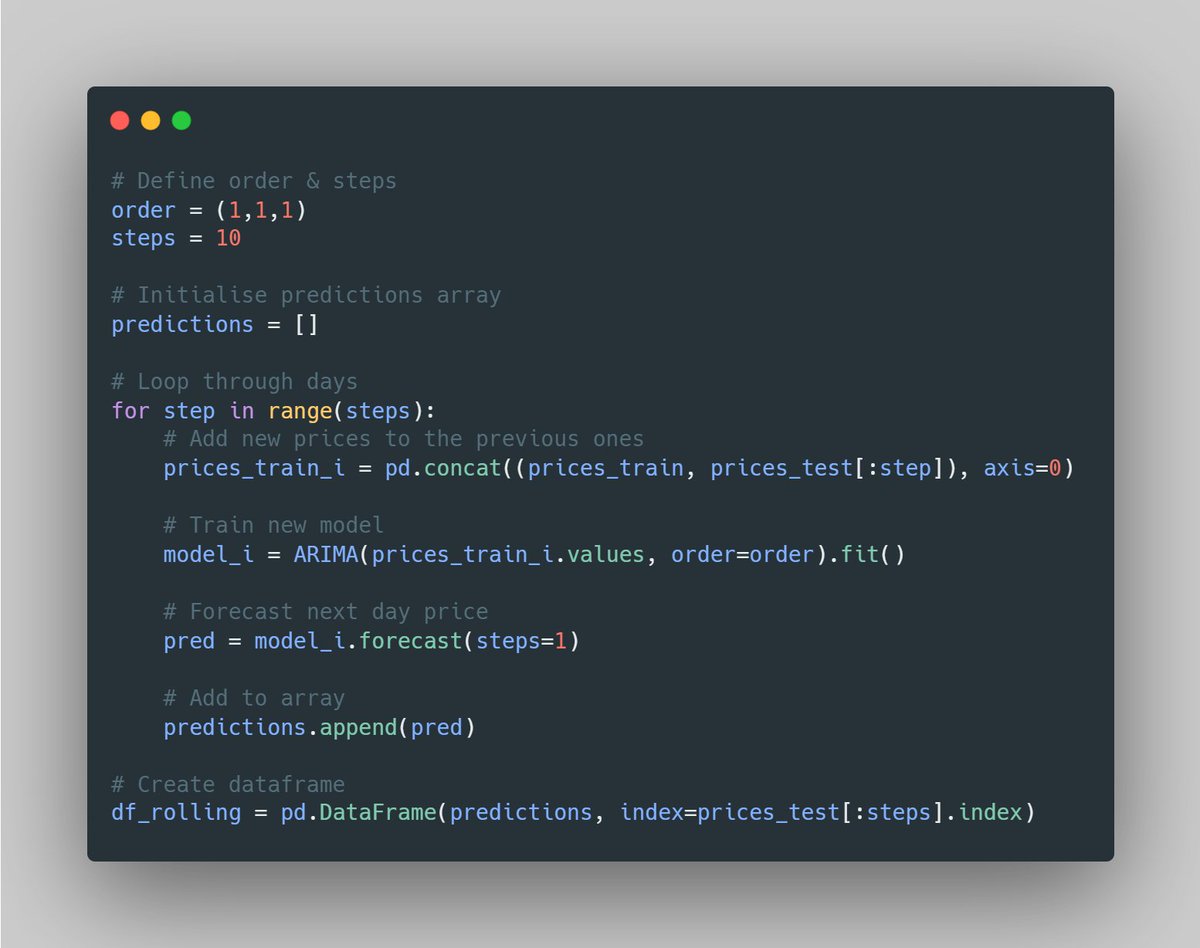
How can you transform your Time Series data to make it stationary? 🤔
Check below 7️⃣ ways of achieving this! 👇
🧵 THREAD🧵
#python #datascience #machinelearning #ai
Check below 7️⃣ ways of achieving this! 👇
🧵 THREAD🧵
#python #datascience #machinelearning #ai

1️⃣ Differencing:
This method involves subtracting the previous value from the current value.
This can help to remove any trend or seasonality in the data and make it stationary.
This method involves subtracting the previous value from the current value.
This can help to remove any trend or seasonality in the data and make it stationary.
2️⃣ Moving Average:
This method involves taking the average of the time series over a certain period, such as a month or a year.
This can help to smooth out any fluctuations in the data and make it more stationary.
This method involves taking the average of the time series over a certain period, such as a month or a year.
This can help to smooth out any fluctuations in the data and make it more stationary.
3️⃣ Exponential Smoothing:
This method involves taking a weighted average of the time series, where the weights decrease exponentially as you move further back in time.
This can help to smooth out the data and make it more stationary.
This method involves taking a weighted average of the time series, where the weights decrease exponentially as you move further back in time.
This can help to smooth out the data and make it more stationary.
4️⃣ Decomposition:
This method involves decomposing a time series into its seasonal, trend and random component.
This is useful when the time series is a combination of trend, seasonality and noise.
This method involves decomposing a time series into its seasonal, trend and random component.
This is useful when the time series is a combination of trend, seasonality and noise.
5️⃣ Log-transformation:
This method involves taking the natural logarithm of the time series.
This can help to stabilize the variance of the data and make it more stationary.
This method involves taking the natural logarithm of the time series.
This can help to stabilize the variance of the data and make it more stationary.
6️⃣ Box-Cox transformation:
This method involves applying a power transformation to the time series to stabilize the variance.
The power parameter is chosen by maximizing the log-likelihood function of the transformed data.
This method involves applying a power transformation to the time series to stabilize the variance.
The power parameter is chosen by maximizing the log-likelihood function of the transformed data.
7️⃣ Model fitting:
This method involves fitting a model to the data to remove any linear or non-linear trend.
This method involves fitting a model to the data to remove any linear or non-linear trend.
⚠️It is important to note that, some of these methods may not be suitable for all types of time series data, and that the choice of method can depend on the specific characteristics of the data.
Please 🔁Retweet the FIRST tweet if you found it useful!
🔔 Follow me @daansan_ml if you are interested in:
🐍 #Python
📊 #DataScience
📈 #TimeSeries
🤖 #MachineLearning
Thanks! 😉
🔔 Follow me @daansan_ml if you are interested in:
🐍 #Python
📊 #DataScience
📈 #TimeSeries
🤖 #MachineLearning
Thanks! 😉
https://twitter.com/daansan_ml/status/1613849663253409793
• • •
Missing some Tweet in this thread? You can try to
force a refresh









